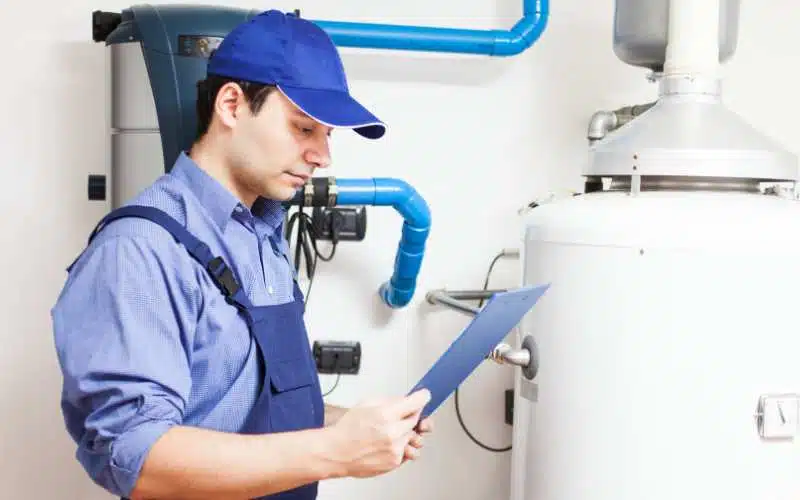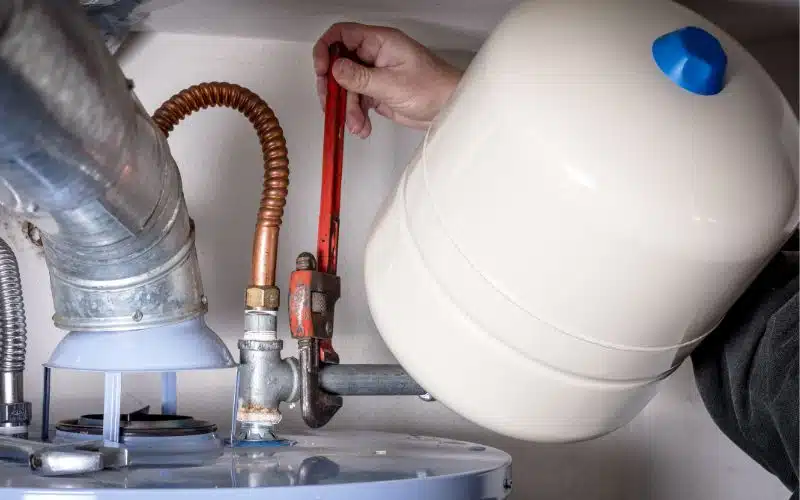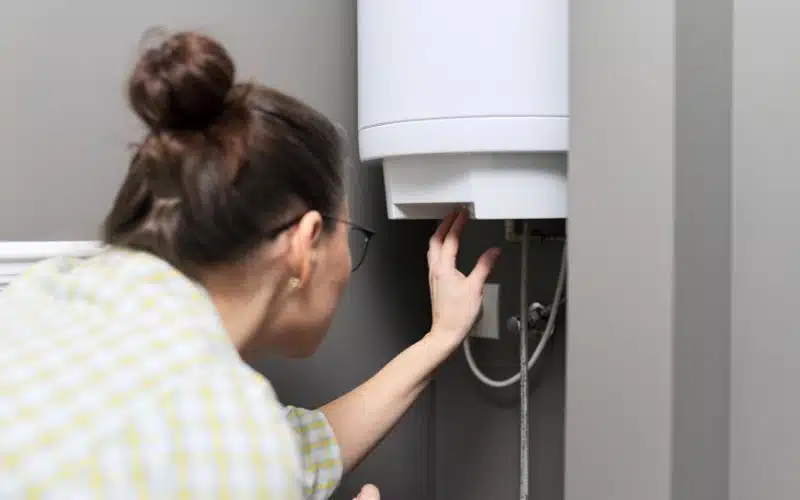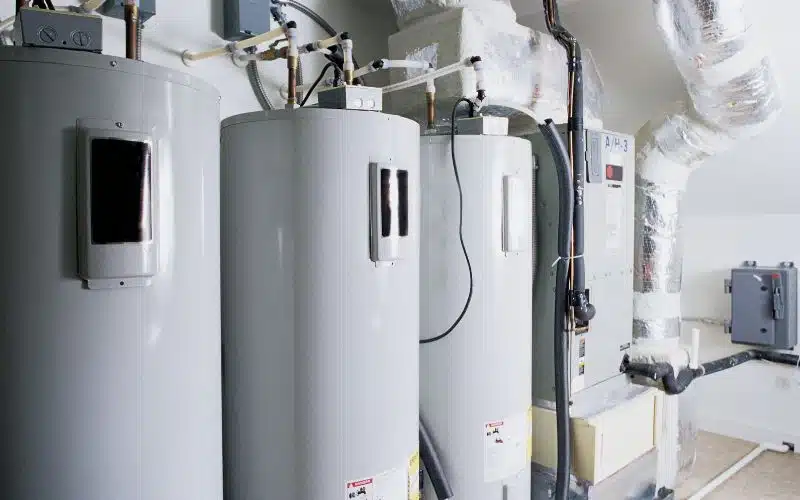A functional furnace heats the temperature of your home at intervals till it is at the set thermostat temperature.
However, you might wonder what it means when your furnace turns on every ten minutes. A healthy furnace will run three to seven cycles per hour, depending on your type.
On the other hand, your furnace might be faulty if it runs for one to two minutes or too often in an hour. So, why does the furnace turn on every ten minutes?
If your furnace turns on every 10 minutes, a foreign object obstructs your heat grates, or your grates might be closed. Also, the furnace system could cause heat build-up if the vents are closed. The accumulated heat will cause the furnace to run for short intervals and shut down. It could also be due to a tight furnace hysteresis setting.
Why Does My Furnace Turn on Every 10 Minutes?
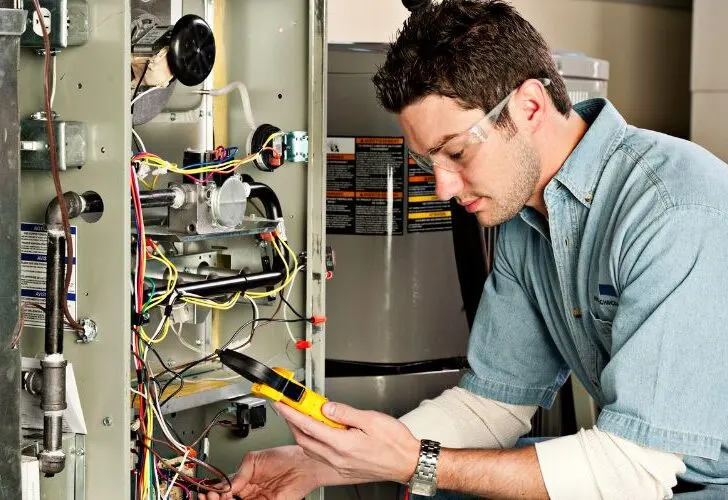
When your furnace turns on every ten minutes, it is because there is low airflow from closed furnace grates.
The low airflow will stop the air exchange and increase the furnace’s internal temperature. The furnace system will shut down when the temperature gets too high and start short cycling.
However, before investigating why your furnace is short-cycling, you should go through the appliance manual to check the thermostat’s regular setting and the furnace cycling timing for the appliance.
Below are some of the reasons your furnace turns on at ten minutes intervals:
#1. Corrosion of Flame Sensors
When your furnace heats the air, it will produce steam that contains small amounts of moisture. The air moisture can cause metals in the furnace to rust.
Over time, the corrosion will accumulate, triggering constant short cycling in your furnace system.
The frequent cycling of your furnace can create a health risk for you and your home, especially during freezing seasons.
To prevent or remedy this issue, clean your flame sensors of rust and dirt or change the sensors entirely if the damage is irreparable.
The repair process requires utmost care, as you will be dealing with electricity and combustible gases.
However, if you cannot handle the repairs, contact a professional for an in-depth inspection and replacement of your flame sensor.
#2. Overheating
Overheating is also a common reason furnace cycles turn off at short intervals. When your furnace system overheats, it is often due to a defective temperature-monitoring part in the furnace.
This fault can cause the furnace to overheat and stop functioning. Once the system shuts down, it reduces its cycle interval to ten minutes or less.
A defective heat exchanger is also a cause of short cycling in your furnace. A leaky heat exchanger emits heat to your furnace system, thereby overheating the appliance over time.
Contact an HVAC repair specialist to inspect and conduct repairs on your furnace system.
#3. Dirty Air Filters
Though this might seem like a silly issue, it can hinder the proper functioning of your furnace. Dirt and debris on your air filter disturb the airflow and, if spare time, block the airflow completely.
This backup will keep the warm air in the furnace and reduce the distribution of hot air around the room.
The warm air in the furnace will increase, leading to overheating, and eventually, the appliance will shut down and begin short-cycling.
To avoid this issue, change the air filter constantly or follow the instructions on your furnace user manual.
If you are not sure how to proceed with changing the air filters, consult a professional for more information.
#4. Sealed Heat Grates
Unlike a dirty air filter that does not allow air to flow into the furnace, sealed heat grates do not let the air out of the furnace system.
Instead, the heat grates allow the flow of warm air from the ductwork to the living area. It will also increase the air temperature from the furnace to the living area.
To fix this issue, open more heat grates to balance the airflow from the furnace system. Also, remove obstructions at the grates, if any, to allow the free flow of warm air into your home.
#5. Clogged Flue
A pest, bird’s nest, or other foreign particles get into your furnace flue and clog the vent pipe. Once the blockage accumulates, the furnace will stop functioning and start short-cycling.
The blockage can cause air poisoning if the furnace does not shut down. Contact an HVAC system expert to get rid of the clog in the flue.
#6. Air Leaks
Your short-cycle problem could be a result of improper insulation. Before inspecting the components of your furnace system, check if your windows and doors are properly closed.
If the windows have any open aperture, the warm air from the furnace will keep escaping out of the holes in the window area.
This issue will hinder the optimum performance of your furnace, which can cause short cycling.
You can avoid or correct this issue by sealing your windows properly or caulking the areas around the window that allow air escape.
Reasons Your Furnace Is Cycling at a 10 Minutes and Possible Fixes
| Causes | Possible Solutions |
|---|---|
| Corroded flame sensors | Clean the rust on the flame sensor or replace it with a new one. |
| Dirty filter | Regularly check your furnace filter for dirt accumulation. If the furnace filter is too dirty, change it. |
| Closed heat grate | Open as many heat grates as possible. To prevent this issue, ensure at least 80% of the grates are open. Clear the grates of obstructions, if any. |
| Clogged exhaust flue | Get rid of any obstacle in the exhaust flue. If the blockage is a pest, contact pest control to remove the pest. |
| The thermostat is in the wrong location. | Consult a specialist for advice on the correct thermostat placement and relocate it. Ensure the thermostat is not close to a window or exposed to sunlight. |
| Air Leaks | Close all windows and caulk your frames to keep the hot air from escaping. |
| Faulty Thermostat | Contact an HVAC specialist to examine the thermostat. |
Is It Normal for the Furnace to go on and off Every 10 Minutes?
It is abnormal for your furnace system to go off every ten minutes. However, before coming to that conclusion, you should determine the standard cycle time for your furnace unit.
The frequency at which your furnace runs depends on a few variables. Some of these factors include the outdoor temperature, the age of the furnace unit, and your home’s insulation.
The expected timing for a regular furnace unit cycling is about 15 minutes a cycle. This cycle keeps your living area warm until it reaches the set thermostat temperature.
If your furnace runs every ten minutes, it is likely due to a faulty component in the furnace system.
How Long Should Furnace Run Before Shutting Off?
A healthy furnace should run about 10 to 15 minutes before shutting. This run time usually occurs two or three times an hour.
However, the amount of time the furnace runs usually depends on the temperature of the air outside.
During milder temperatures, the furnace runs for 10 to 14 minutes, while during colder temperatures, it runs for longer.
If your furnace system is faulty, it will run too frequently, leading to short cycling. If your furnace is faulty, it can be a health risk to you and your home, especially during cold weather.
Check the system component for faults when you notice these frequent short cycles in your furnace. You can also refer to a professional to inspect the system for defects.
How Often Should a Furnace Turn on?
A furnace system should run two to three times an hour for 10 to 15 minutes. The cycle depends on the temperature at the time of the year and then the thermostat setting.
A furnace runs in cycles to maintain a balance in the room temperature till it reaches the set temperature in the thermostat.
During winter or when the temperature outside the house is freezing, the furnace will run at longer cycles to maintain a warm temperature in your home.
However, it is different for milder weather like autumn and spring since it has higher temperatures.
How to Fix Short Cycling Furnace?
There are various ways to fix a short-cycling furnace. Short cycling in a furnace can be uncomfortable and risky to your health.
Here are some tips that can help you with your short-cycling furnace problem:
#1. Replace the Filter
A dirty furnace filter limits the inflow of air into the furnace. You will need to purchase a new air filter to fix this issue.
Uninstall the dirty filter, clean the area and install the new air filter. Ensure the arrows of the filter are in one direction with the unit’s airflow.
#2. Clean Clogged Flue
The purpose of the furnace flue is to get rid of dangerous gasses. However, foreign objects in the flue can cause unsafe gasses to filter into the house.
To fix this issue, turn off the furnace and dismantle the flue. Next, use a flashlight to inspect the flue and remove any obstacles and dirt. Then, reassemble the furnace flue and turn on the furnace.
#3. Clean/Replace Flame Sensor
Turn off the furnace system and use a socket wrench to remove the flame sensor. With fine-grit sandpaper, rub the affected area lightly till it is clean.
Use a clean cloth to wipe off rust residue. If the flame sensor is too rusty, replace it.
Other ways you could fix the furnace short-cycling include:
- Open any shut heat grate to allow airflow out of the furnace.
- Replace your extensive furnace system with one that fits your home.
- Close all air outlets like windows and doors to keep the warm air from escaping.
- Consult an HVAC expert to perform an inspection on the furnace for any faults in the furnace.
Conclusion
Once you notice the short intervals of your furnace cycles, it indicates that your furnace is short-cycling.
Your furnace system should run two or three times an hour for 15 minutes. Consult a professional to inspect and repair the furnace system if you cannot handle the repairs.
